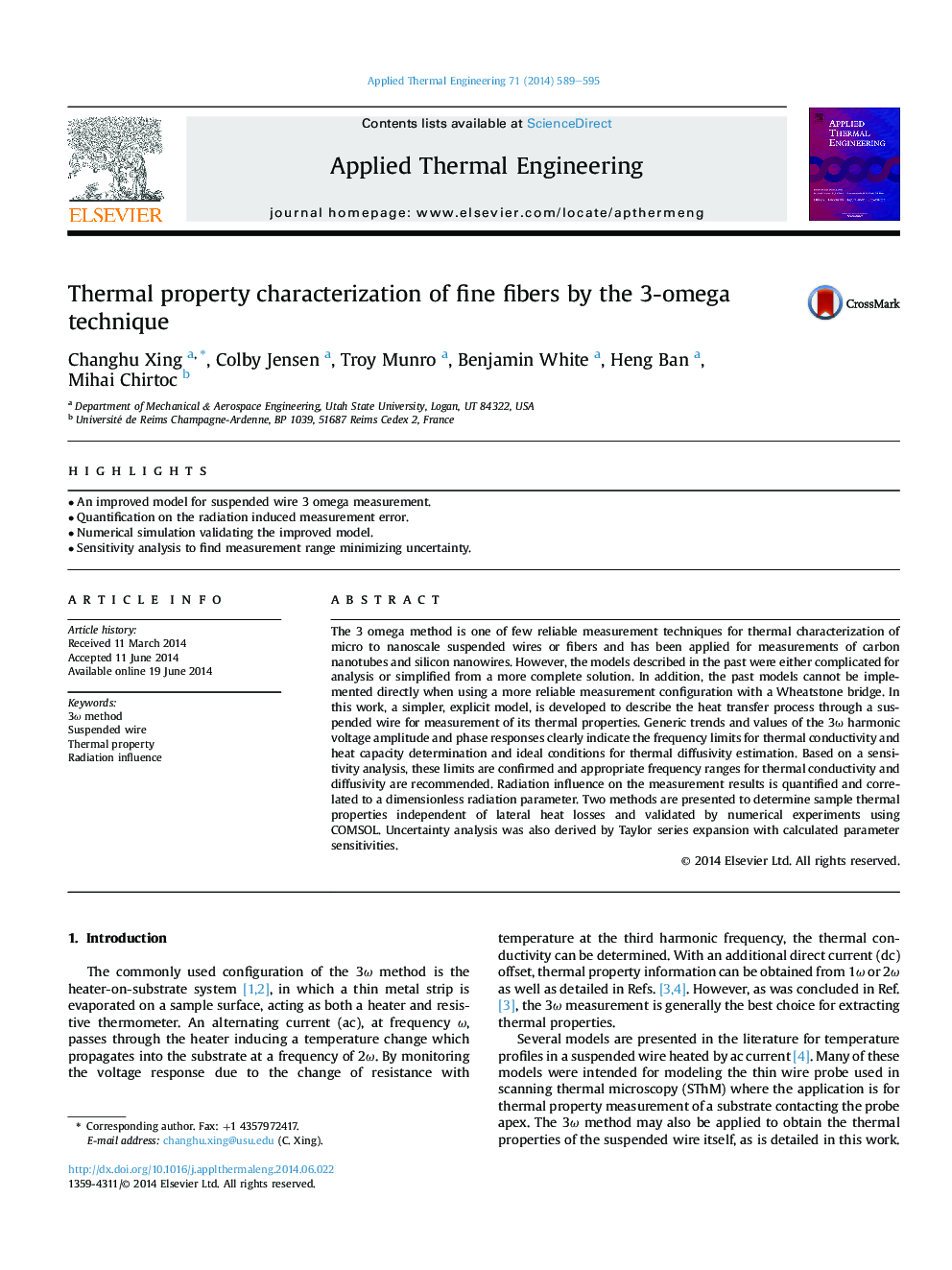| Article ID | Journal | Published Year | Pages | File Type |
|---|---|---|---|---|
| 646137 | Applied Thermal Engineering | 2014 | 7 Pages |
•An improved model for suspended wire 3 omega measurement.•Quantification on the radiation induced measurement error.•Numerical simulation validating the improved model.•Sensitivity analysis to find measurement range minimizing uncertainty.
The 3 omega method is one of few reliable measurement techniques for thermal characterization of micro to nanoscale suspended wires or fibers and has been applied for measurements of carbon nanotubes and silicon nanowires. However, the models described in the past were either complicated for analysis or simplified from a more complete solution. In addition, the past models cannot be implemented directly when using a more reliable measurement configuration with a Wheatstone bridge. In this work, a simpler, explicit model, is developed to describe the heat transfer process through a suspended wire for measurement of its thermal properties. Generic trends and values of the 3ω harmonic voltage amplitude and phase responses clearly indicate the frequency limits for thermal conductivity and heat capacity determination and ideal conditions for thermal diffusivity estimation. Based on a sensitivity analysis, these limits are confirmed and appropriate frequency ranges for thermal conductivity and diffusivity are recommended. Radiation influence on the measurement results is quantified and correlated to a dimensionless radiation parameter. Two methods are presented to determine sample thermal properties independent of lateral heat losses and validated by numerical experiments using COMSOL. Uncertainty analysis was also derived by Taylor series expansion with calculated parameter sensitivities.
